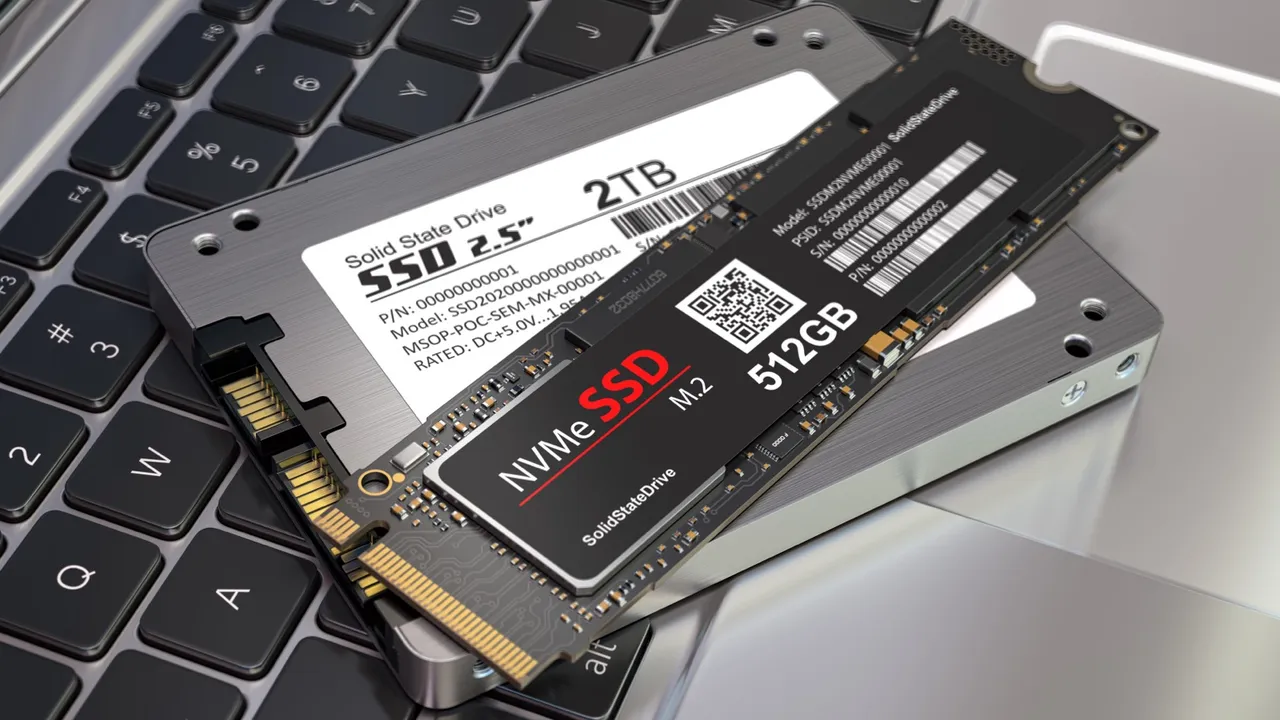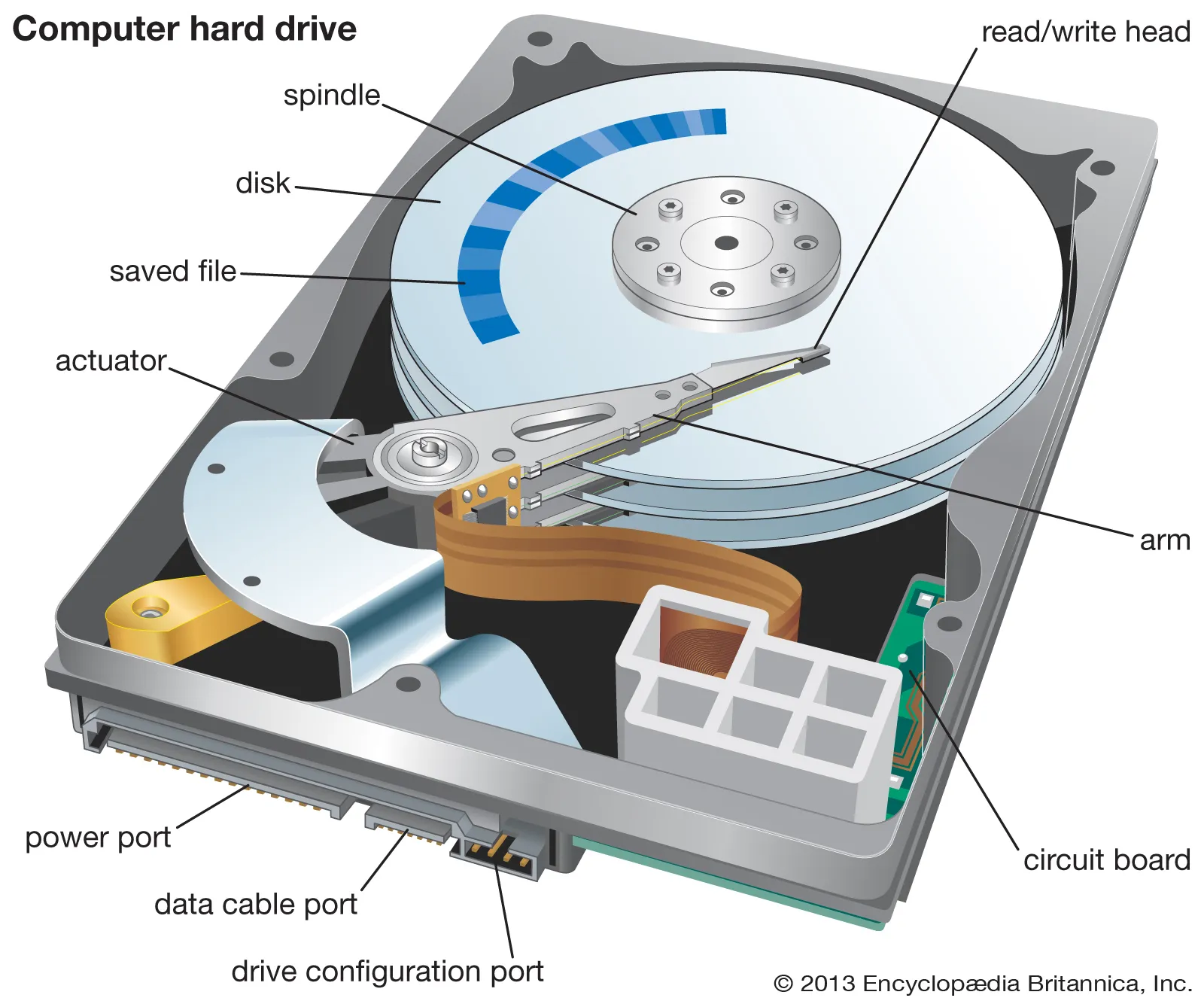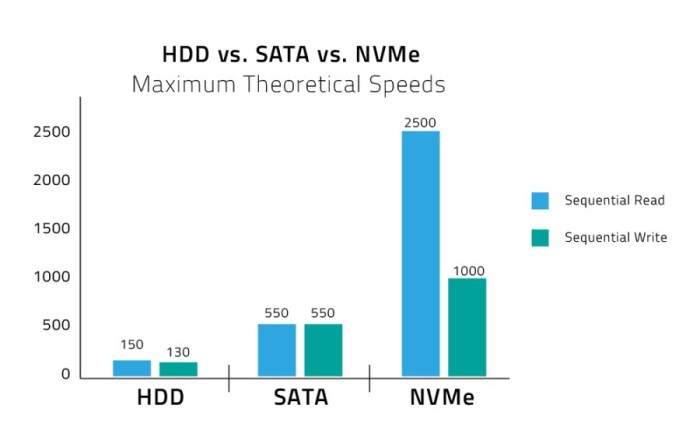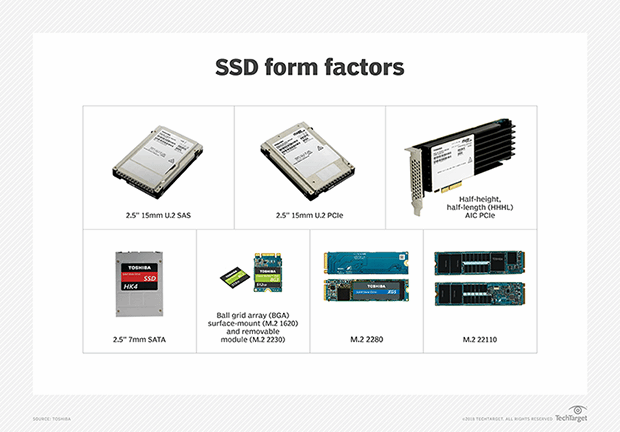When it comes to storage solutions, a variety of products are available on the market. Users often get confused between M.2, U.2, NVMe, SATA, SSDs, and HDDs. The main reason is that they are not fully aware of these terms. This article will explain the working mechanism and specifications of M.2 and U.2 form factors, SSDs and HDDs, and NVMe and SATA interface.
So, without further ado, let’s get started!
SSD Vs. HDD
SSD Vs. HDD is an ongoing debate. However, it is widely accepted that SSDs offer way better speed, efficiency, and reliability. Especially when it comes to modern-day applications such as gaming, high-level content creation, video editing, and 3D rendering SSDs have a technical edge over HDDs.
Let’s understand in depth why SSDs and better than HDDs.
SSDs

SSD (Solid State Drive) is a modern-day storage solution. It works by using the NAND flash memory to store data persistently. The flash memory is organized into blocks, which are divided into pages. The pages are written to and read using an electronic controller. This controller manages the data transfer between your computer's SSD and CPU.
SSD is a smart storage solution in so many ways. The first and foremost advantage SSDs possess over HDDs is that they don’t have any moving parts. Due to this, the reading and writing speeds of SSDs are way better than HDDs. When you give a command to read data from SSD, the electronic controller retrieves data from memory and then blocks in a predetermined order. So, there is no lag whatsoever.
Similarly, when you command your CPU to store data on the SSD, the electronic controller determines the most efficient and fastest way to do so. It rapidly breaks down large amounts of data into smaller blocks and pages. The data is spread evenly across all the blocks to prevent certain blocks from wearing out prematurely. In short, SSD is the fastest and most efficient storage solution on the market.
HDDs

HDD (Hard Disk Drive) is an older storage solution. It reads and writes data onto rotating disks and plates coated with magnetic material. HDDs are generally considered a cheaper way of storing large amounts of data. Hence, it is still a viable solution for people who want to store a large amount of data that doesn’t need to be readily available.
HDDs use reading and writing heads to store and read data from the magnetic surface, as the physical process is involved here, so the speeds are generally slower. When you command your CPU to read a certain file on HDDD, the reading head detects changes in the magnetic field on the hard drive. Later this data is converted to a binary code in the form of 1s and 0s and displayed on your screens.
There are plenty of moving parts inside an HDD. So, the efficiency of an HDD is dependent upon the rotation speed of the disks, the density of the magnetic material, and the performance of the read/write heads. All these variable factors make HDDs susceptible to mechanical failure and physical damage.
NVMe Vs. SATA

NVMe is an advancement over SATA. It is a newer and faster data transfer protocol that reduces retrieving and writing memory time. NVMe can read and write data at speeds of over 7,000 MBs/s. On the other hand, SATA can only give you a speed of 500-600 MBs/s.
Let’s find out more about these technologies.
NVMe
NVMe (Non-Volatile Memory Express) is a specially designed data transfer protocol for solid-state drives. NVMe is compatible with the high-speed PCIe (Peripheral Component Interconnect Express) interface. Thanks to this, it boasts lower latency and much higher bandwidth.
NVMe works by using a streamlined command set. Now, a streamlined command set is much more simplified. Hence, it is easily interpreted by the processor. Moreover, the command overheads of a streamlined command set are also minimum. Due to this, the commands are executed in a shorter amount of time and much more efficiently.
NVMe also allows for parallel processing. It means that an NVMe SSD can handle multiple commands simultaneously. This is especially helpful in high-level content creation, where you have to carry out multiple tasks simultaneously. Overall, NVMe is a much superior protocol that offers faster data transfer rates and reduced time delays to read or write commands.
SATA
SATA (Serial Advanced Technology Attachment) is an older interface connecting storage devices and CPU processors. SATA is based on a serial interface; thus, it transmits a single bit of data over a pair of wires. In contrast, the NVMe protocol supports parallel data transfer. Hence, NVMe can transmit a larger amount of data in a short amount of time.
When it comes to power consumption, NVMe takes the lead over SATA. NVMe offers a more efficient way of connecting the storage device to the processor while consuming less power. This might seem insignificant, but power consumption is a big issue for smaller devices such as mobiles and laptops. SATA-based drives are still in use because they are much cheaper than NVMe.
U.2 Vs. M.2

U.2 is a relatively modern form factor used to connect storage drives to the motherboard. U.2 form factor is highly compatible with modern SSDs and motherboards. Plus, they offer higher flexibility and data transfer rates, making them an ideal choice for modern computers.
U.2
The highlight of the U.2 form factor is that they offer higher storage capacity than the M.2 form factor. Some U.2-based drives can store up to 30 TB of data. U.2 form factor is compatible with the PCIe interface. Hence, it supports faster data transfer. U.2 drives are connected to the motherboard using an external cable; hence, they use less physical space.
M.2
M.2 drives are much smaller than U.2, and they are directly placed over the motherboard. While M.2 is not far behind U.2 form factor in technology, it has a smaller storage capacity. Plus, there is a lot of variety in M.2 drives. You may be able to find one which is PCIe compatible. However, some use the SATA interface. So, these drives are slower and have high latency.
Which Storage Type, Interface, and Form Factor is Best For Your PC?
An NVMe-based SSD with U.2 form factor is best for your PC. But it isn’t this simple. In each case, you must weigh the pros and cons of using a specific storage type, interface, and form factor. HDDs might be a better choice for some applications where huge amounts of data need to be stored.
However, for high-performance PCs, it is highly recommended that you use an NVMe-based SSD. Because this choice will offer a much more efficient and faster execution of commands. It is important to note that the NVMe protocol is specially designed for SSDs, making it the best combination.
As far as the form factor goes, you can choose either. There isn’t much of a difference. Just see for the motherboard and processor compatibility and choose one. I hope this summarizes the SSD vs. HDD, NVMe vs. SATA, and U.2 vs. M.2 discussion.
If you have anything to add, let us know in the comments below. We would love to hear from your guys!